WARMACHINE LORE: Nightmares and Boogeymen: the Orgoth
5 Minute Read
Jan 3 2011
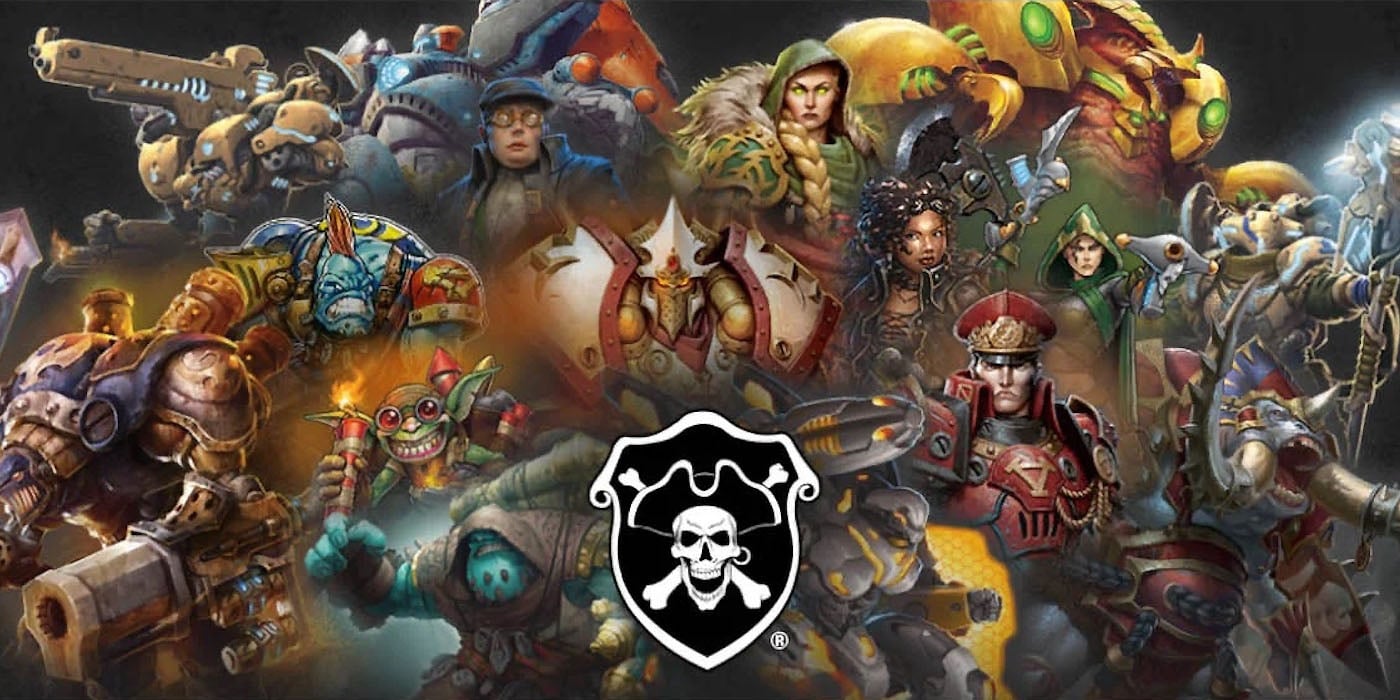
Advertisement
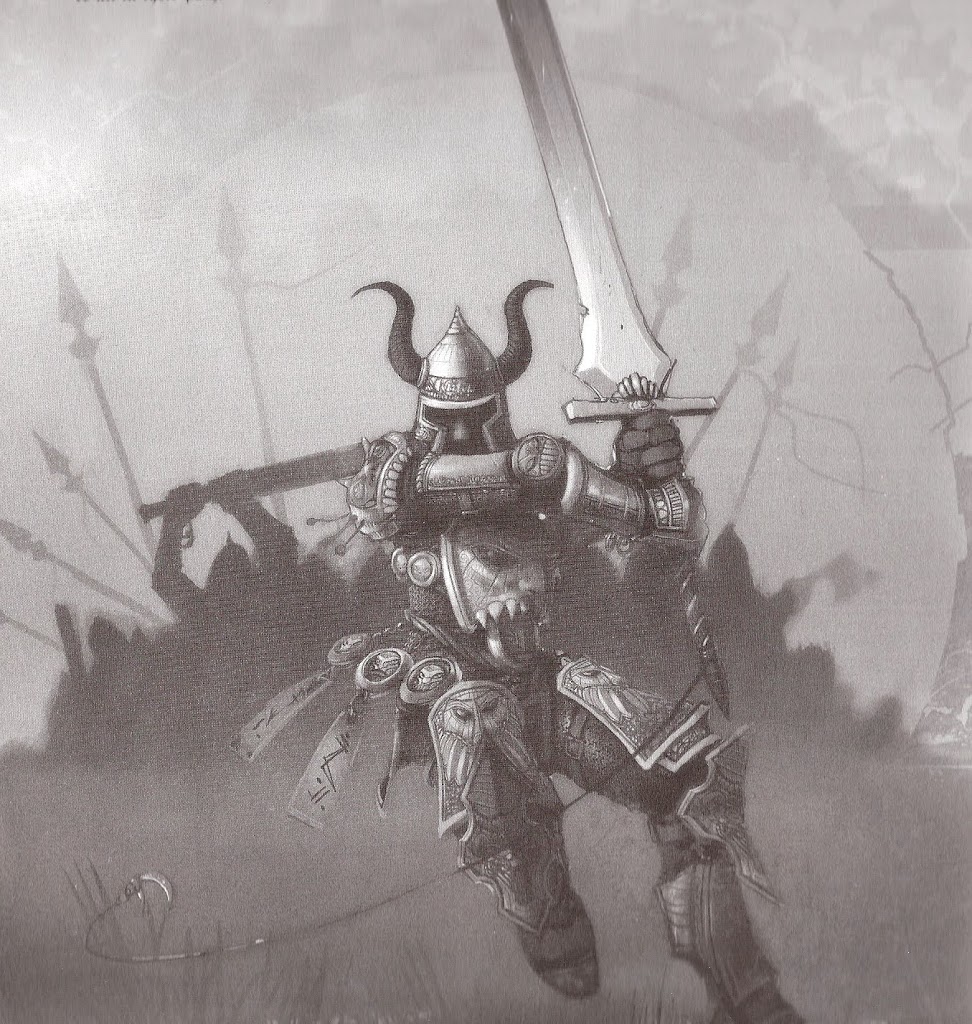
Hey, folks, Voices here again with another look at Western Immoren. Since I just had to broach the subject in the first Profiles in Badassery post, I figured I should go ahead and follow up with a closer look at the Orgoth…or at least what we–the consuming public–know about ’em. So get ready for guys in armor that has leering embossed demon faces all over it! The Orgoth are invading…AGAIN!
Prior to 600 BR, there was no knowledge of the people known as the “Orgoth.” In that year, blackships landed on the Immorese shores and disgorged thousands of bloodthirsty warriors; these soldiers and the fell warwitches that supported them swept aside all resistance in a conquest lasting not quite 170 years, until they controlled almost all Western Immoren (Rhul and Caspia held out by the strength of their defenses, Ios was completely closed, and Toruk personally annihilated the fleet sent to subdue Cryx) by the year 433 BR. Such was the might of the Orgoth that they are even said to have slain a dragon, though the name of this wyrm is unrecorded and the fate of its athanc was to rehatch a wyrmling that destroyed the temple it was placed in.
After several hundred years of abject slavery or total isolation, the spirit of the Immorese people found renewed strength in a new dream: liberation. Slowly, networks of resistance fighters built up, assembling arms and biding their time. It was during this time of underground resistance that a resistance alchemist discovered the two-part alchemical compound now known as blasting powder; it was also during this time that the Dark Twin Thamar gifted humanity with arcane magic (circa 150 BR).
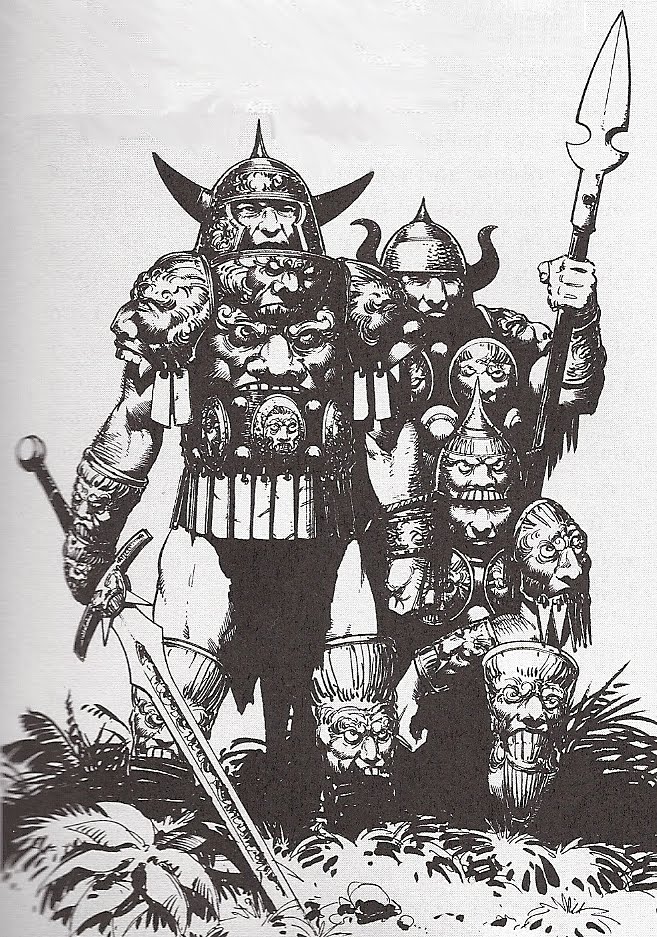 The Orgoth had the same taste in interior decorating that they did in armor filigree…
The Orgoth had the same taste in interior decorating that they did in armor filigree… The underground went public in 1 AR, a year after the city of Fharin threw off Orgoth shackles in an unplanned revolt that occurred in response to a demanded tithe of 8,000 people. But the Fellowship did not last, when its leaders were captured and executed in 7 AR along with a million other Immorese in a brutal restoration of order. The Rebellion went back underground, continuing to work at the industries of freedom; and by the 80s AR, working firearms became a common reality after the development of the pinlock firing mechanism. The rebels began to strike at the Orgoth, and slowly, regions and cities began to be liberated through a combination of tactics, magic, explosives, and guns that the Orgoth found they could only barely match. Still, it was years before the liberation began in earnest. The Mechanikal Revolution of the second century (100-199 AR) finally started providing the tools that would end the Occupation, culminating in the Colossals; and in the latter 170s, these weapons took to the field, adding their weight to the irregularly-fought and increasingly victorious liberation of Immoren.
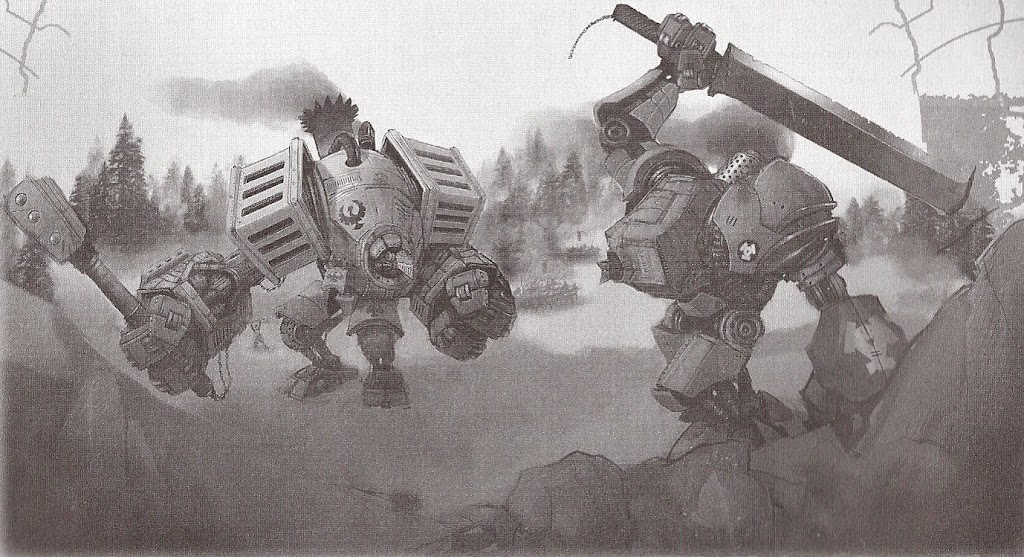 If I was faced with either of these guys, it doesn’t matter how many friends I have beside me, I’d run, too…
If I was faced with either of these guys, it doesn’t matter how many friends I have beside me, I’d run, too…In 201 AR, after two centuries of sporadic uprisings and decades of constant warfare with the newly-powerful armies of the rebellion, the Orgoth were forced off Western Immoren. The final blow was struck not by the rebels, but by the Dragonfather: a Cryxian invasion armada landed a massive army on Gharlghast that devastated the besieged Orgoth capital of Drer Drakkerung, afterwards plundering what knowledge they could.
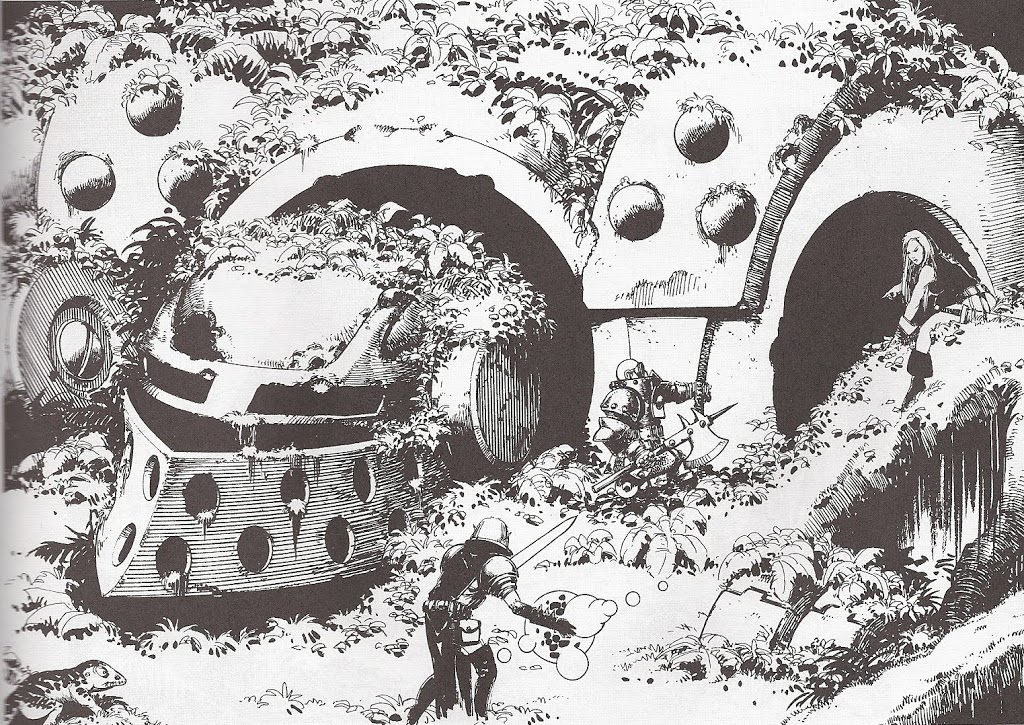
Not even the mightiest machine of war is completely invulnerable…
The mark the Orgoth left on Immoren is indelible. The modern Iron Kingdoms are, in most ways, a reflection of the lengths the victors of the Revolution had to reach simply to ensure their security in the frightened days following the fall of Drer Drakkerung. The Revolution was so important—so vital—to the people of Western Immoren that its successful conclusion marked the change to a new calendar; the “R” in BR and AR stands for “Revolt.”
Without the Orgoth, there would be no warjacks—indeed, probably no steamjacks at all—for the creation of the colossals was contingent on the development of the cerebral matrix that is the forerunner of the modern cortex.
But these aren’t all. There are other leftovers of the Orgoth, many of which have become quite prominent recently. The recent Thornwood campaign of 606 AR centered around the efforts of Cryxian leaders to seize an until-then undiscovered font of power left by the conquerers: the Garrodh Temple, which housed the tortured souls of thousands of victims slaughtered during the occupation. Cryx plundered yet more from the Orgoth: the War Witch tradition is in fact Orgoth in origin, not Cryxian.
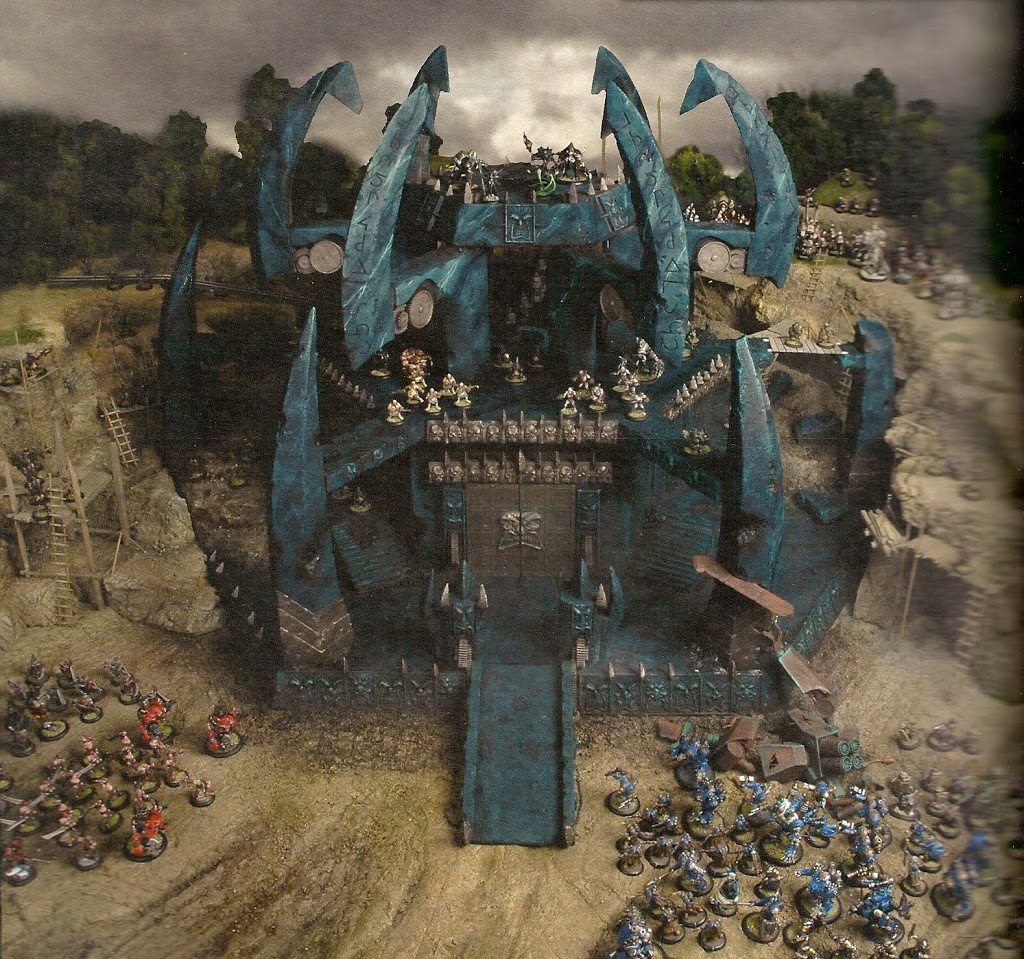
Even after five centuries, armies still fight over the remains of the Orgoth occupation…
Advertisement
In the dark corners of undiscovered ruins across Immoren, other horrors left behind still creep. Excruciators are an infrequent but dangerous hazard to those foolish enough to spelunk those dungeons that have leering demon faces for wall relief. 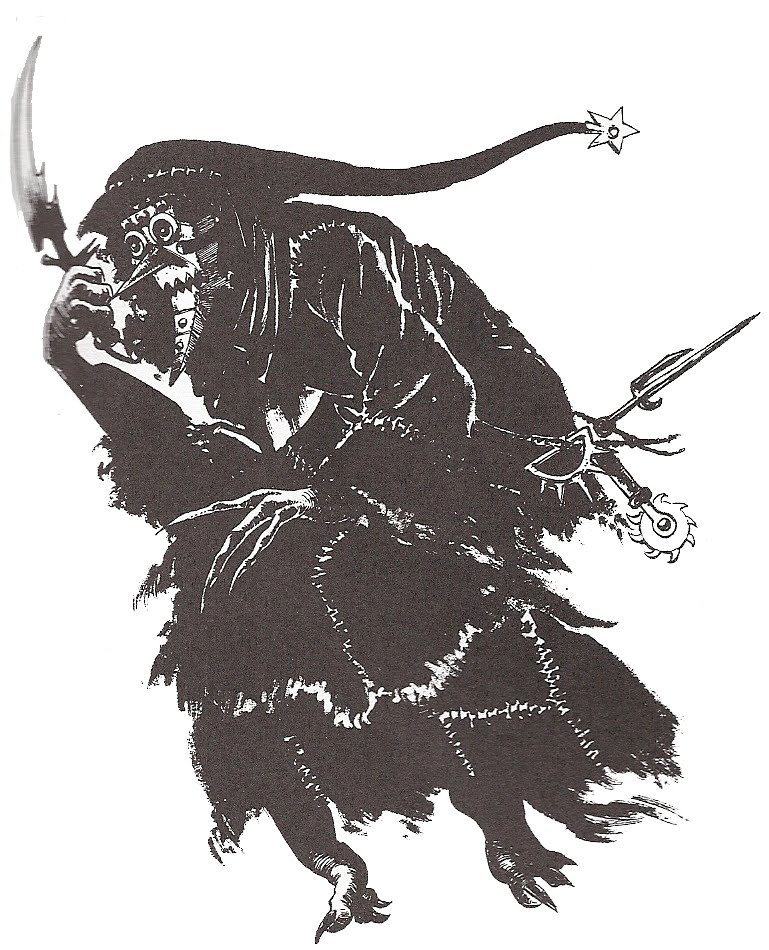 What you DON’T want to meet in a dark alley…
What you DON’T want to meet in a dark alley…
 What you DON’T want to meet in a dark alley…
What you DON’T want to meet in a dark alley…
Many believe that the Kingdoms don’t really know what lies on the other side of Meredius; all those who think this are wrong…they know that what waits on the other side of the ocean is the darkest nightmare of the people of Immoren.
Okay, folks, so that’s it about the Orgoth. Hope this has spurred some of y’all on to consider some fun scenarios around additional Orgoth sites across Immoren…next time, it’ll be back to the Profiles in Badassery series. If y’all have any questions (and Lord knows there’re plenty of ’em that I still have!) or thoughts about the Orgoth, give your voice to ’em and we’ll do our best to given an honest answer! ‘Til next time, this is Voices, signing off.
Advertisement
Author: Guest Columnist
Advertisement





